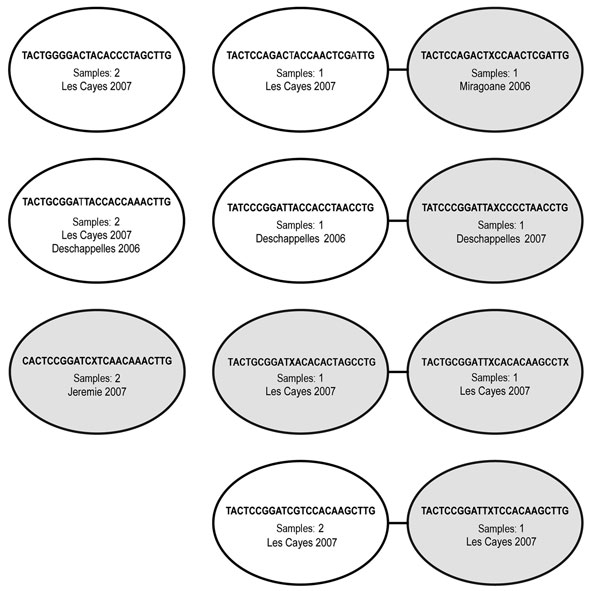Volume 22, Number 5—May 2016
Research
Plasmodium falciparum K76T pfcrt Gene Mutations and Parasite Population Structure, Haiti, 2006–2009
Figure 3

Figure 3. Visualization of 15 identical (same single-nucleotide polymorphism positions call at 24 of 24 positions) and nearly identical (23 of 24 identical positions) molecular barcodes from 42 monogenomic samples from patients in Haiti, 2006 and 2007. Each node (oval) represents an individual barcode. Samples with identical barcodes are included in the same nodes, and related barcodes (1 single-nucleotide polymorphism positions difference) are connected by lines. Gray nodes indicate that there is some point of ambiguity between barcodes, defined as either both alleles detected (N) or no data (X) at a specific position, indicating <100% confidence of a complete match between barcodes.
Page created: April 13, 2016
Page updated: April 13, 2016
Page reviewed: April 13, 2016
The conclusions, findings, and opinions expressed by authors contributing to this journal do not necessarily reflect the official position of the U.S. Department of Health and Human Services, the Public Health Service, the Centers for Disease Control and Prevention, or the authors' affiliated institutions. Use of trade names is for identification only and does not imply endorsement by any of the groups named above.